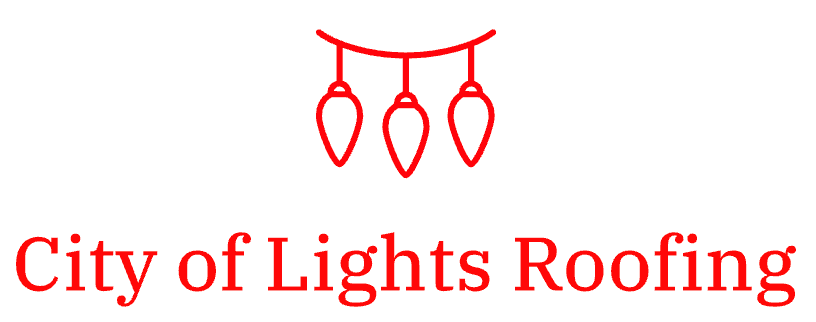Single Ply Roofing
Single-ply roofing is exactly what it sounds like - durable, flexible material that is applied in a single layer of the surface of a roof. While usually made for commercial buildings, Aurora homeowners are now choosing single-ply roofing for flat or low-slope roofs on their homes especially given how popular this design is becoming.
The material on single-ply roofing is made from synthetic polymers - meaning humans made it in a labratory with the strongers technologies and materials - allowing it to be strong for weather resistance, thermal performance, and adaptability to unique roof structures.
When selecting single-ply roofing, there are two options to choose from: Thermoset and Thermoplastic roofing. Thermoset membranes are made from rubber and when fully heated, they are impossible to
There are two primary categories of single-ply membranes: Thermoset and Thermoplastic. Thermoset membranes like EPDM are made from rubber compounds and are known for their flexibility and resistance to UV radiation. Thermoplastic membranes such as TPO and PVC are heat-weldable, offering excellent seam strength and chemical resistance.
Types of Single-Ply Roofing
1. EPDM (Ethylene Propylene Diene Monomer)
EPDM is often referred to as rubber roofing and is one of the most widely used single-ply systems. It is black by default but also available in white for better reflectivity. EPDM is appreciated for its long lifespan (20–30 years), resistance to ozone and UV rays, and its ability to expand and contract with temperature changes. It's typically installed with adhesives or mechanically fastened, and its seams are sealed with tapes or liquid adhesives.
2. TPO (Thermoplastic Olefin)
TPO is a newer single-ply option and has grown in popularity thanks to its energy efficiency and eco-friendly properties. TPO membranes are usually white or light-colored, offering excellent UV reflection to reduce cooling costs in warm climates. Seams are heat-welded, which creates a strong, watertight bond and reduces the risk of leaks. TPO is considered more affordable than PVC while still offering strong performance.
3. PVC (Polyvinyl Chloride)
PVC roofing systems are known for their durability, chemical resistance, and flame retardance. They are ideal for homes near industrial areas or those with rooftop HVAC systems, grease vents, or other sources of chemical exposure. Like TPO, PVC seams are heat-welded, providing excellent leak protection. While typically more expensive than TPO, PVC often lasts longer and handles chemical exposure better.
Pros of Single-Ply Roofing
- Lightweight Construction: Single-ply systems weigh less than traditional built-up roofing, putting less structural stress on your home.
- Cost-Effective Installation: With fewer layers to install and lower labor costs, single-ply roofing is typically more affordable upfront.
- Energy Efficiency: Light-colored TPO and PVC membranes reflect solar heat, helping reduce energy costs during hot summer months.
- Ease of Maintenance: Simple to inspect and repair; damage is often localized and easy to patch.
- Quick Installation: Especially on large or open surfaces, single-ply systems can be installed relatively quickly, reducing disruption.
- Flexibility and Adaptability: The membranes can accommodate building movement and settle without cracking or failing.
- Resistance to Mold and Bacteria: The materials are less prone to organic growth compared to traditional materials.
Cons of Single-Ply Roofing
- Vulnerability to Punctures: Sharp objects, tools, or heavy foot traffic can damage the membrane, requiring repair.
- Shorter Lifespan Compared to Premium Systems: While durable, most single-ply systems last 20–30 years, which is shorter than metal roofing or premium asphalt shingles.
- Aesthetic Limitations: Not ideal for homes with steep-pitched roofs or where curb appeal is a priority; often seen as more utilitarian.
- Thermal Cycling Risks: Repeated expansion and contraction from temperature swings can stress the seams and attachments over time.
- Installation Quality Matters: Poor installation can lead to membrane failure, especially at seams and flashings.
- Chemical Sensitivity (EPDM): EPDM may degrade when exposed to certain solvents or grease, making it less ideal for rooftops with chemical runoff.
Who Should Consider Single-Ply Roofing?
Ideal Homeowners:
- Owners of modern or contemporary homes with flat or low-pitched roofs that match the minimalist style and functional benefits of single-ply systems.
- Budget-conscious homeowners who want a balance between affordability and performance.
- Environmentally focused individuals looking for energy-efficient, cool-roof options that reduce carbon footprint and energy bills.
- People in warm or sunny climates, where reflective white membranes can significantly cut air conditioning costs.
- Those wanting a low-maintenance system with simple inspection and repair processes.
Homeowners Who May Want Other Options:
- Traditional homeowners with sloped or shingle-style roofs, who may prefer the aesthetic of asphalt shingles, clay tile, or wood shakes.
- Those living in areas with frequent hail, falling debris, or rooftop foot traffic, where more impact-resistant systems like metal or built-up roofing might be better.
- Homeowners looking for a multi-decade solution with minimal future investment may want to explore more durable materials like standing seam metal or slate.
Final Thoughts
Single-ply roofing is a practical, affordable, and energy-efficient roofing solution for the right kind of home and climate. It provides excellent protection for low-slope and flat roofs and has evolved into a highly reliable system when installed by professionals. While it may not be the most aesthetically pleasing or longest-lasting option available, it offers a compelling mix of low cost, ease of maintenance, and environmental benefits that can make it the right choice for many modern homeowners.

